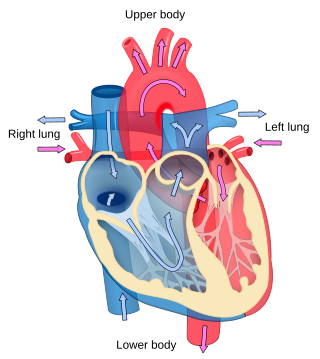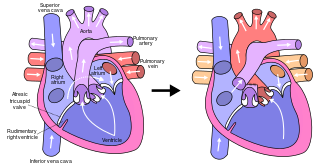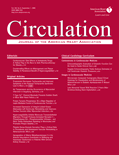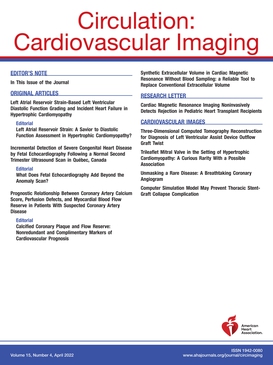
Cardiology is the study of the heart. Cardiology is a branch of medicine that deals with disorders of the heart and the cardiovascular system. The field includes medical diagnosis and treatment of congenital heart defects, coronary artery disease, heart failure, valvular heart disease, and electrophysiology. Physicians who specialize in this field of medicine are called cardiologists, a specialty of internal medicine. Pediatric cardiologists are pediatricians who specialize in cardiology. Physicians who specialize in cardiac surgery are called cardiothoracic surgeons or cardiac surgeons, a specialty of general surgery.

Coronary artery disease (CAD), also called coronary heart disease (CHD), ischemic heart disease (IHD), myocardial ischemia, or simply heart disease, involves the reduction of blood flow to the heart muscle due to build-up of atherosclerotic plaque in the arteries of the heart. It is the most common of the cardiovascular diseases. Types include stable angina, unstable angina, myocardial infarction, and sudden cardiac death. A common symptom is chest pain or discomfort which may travel into the shoulder, arm, back, neck, or jaw. Occasionally it may feel like heartburn. Usually symptoms occur with exercise or emotional stress, last less than a few minutes, and improve with rest. Shortness of breath may also occur and sometimes no symptoms are present. In many cases, the first sign is a heart attack. Other complications include heart failure or an abnormal heartbeat.

Angina, also known as angina pectoris, is chest pain or pressure, usually caused by insufficient blood flow to the heart muscle (myocardium). It is most commonly a symptom of coronary artery disease.

Cardiovascular disease (CVD) is any disease involving the heart or blood vessels. CVDs constitute a class of diseases that includes: coronary artery diseases, stroke, heart failure, hypertensive heart disease, rheumatic heart disease, cardiomyopathy, abnormal heart rhythms, congenital heart disease, valvular heart disease, carditis, aortic aneurysms, peripheral artery disease, thromboembolic disease, and venous thrombosis.

The American Heart Association (AHA) is a nonprofit organization in the United States that funds cardiovascular medical research, educates consumers on healthy living and fosters appropriate cardiac care in an effort to reduce disability and deaths caused by cardiovascular disease and stroke. Originally formed in New York City in 1915, it is currently headquartered in Dallas, Texas. The American Heart Association is a national voluntary health agency.

Interventional cardiology is a branch of cardiology that deals specifically with the catheter based treatment of structural heart diseases. Andreas Gruentzig is considered the father of interventional cardiology after the development of angioplasty by interventional radiologist Charles Dotter.

The Fontan procedure or Fontan–Kreutzer procedure is a palliative surgical procedure used in children with univentricular hearts. It involves diverting the venous blood from the inferior vena cava (IVC) and superior vena cava (SVC) to the pulmonary arteries. The procedure varies for differing congenital heart pathologies. For example in tricuspid atresia, the procedure can be done where the blood does not pass through the morphologic right ventricle; i.e., the systemic and pulmonary circulations are placed in series with the functional single ventricle. Whereas in hypoplastic left heart syndrome, the heart is more reliant on the more functional right ventricle to provide blood flow to the systemic circulation. The procedure was initially performed in 1968 by Francis Fontan and Eugene Baudet from Bordeaux, France, published in 1971, simultaneously described in 1971 by Guillermo Kreutzer from Buenos Aires, Argentina, and finally published in 1973.

Left ventricular hypertrophy (LVH) is thickening of the heart muscle of the left ventricle of the heart, that is, left-sided ventricular hypertrophy and resulting increased left ventricular mass.

Circulation is a scientific journal published by Lippincott Williams & Wilkins for the American Heart Association. The journal publishes articles related to research in and the practice of cardiovascular diseases, including observational studies, clinical trials, epidemiology, health services and outcomes studies, and advances in applied (translational) and basic research. Its 2020 impact factor is 29.690, ranking it third among journals in the Cardiac and Cardiovascular Systems category and first in the Peripheral Vascular Disease category. Articles become open access after a 12-month embargo period.
Paul N. Yu was an American cardiologist, physician-scientist and educator of Chinese descent, and a product of Chinese, British and American medical education. Over a career spanning several decades he trained numerous individuals in clinical cardiology who went on to leadership positions in academia throughout this country.

Myocardial perfusion imaging or scanning is a nuclear medicine procedure that illustrates the function of the heart muscle (myocardium).
Cardiac rehabilitation (CR) is defined by the World Health Organization (WHO) as "the sum of activity and interventions required to ensure the best possible physical, mental, and social conditions so that patients with chronic or post-acute cardiovascular disease may, by their own efforts, preserve or resume their proper place in society and lead an active life". CR is a comprehensive model of care delivering established core components, including structured exercise, patient education, psychosocial counselling, risk factor reduction and behaviour modification, with a goal of optimizing patient's quality of life and reducing the risk of future heart problems.

The European Society of Cardiology (ESC) is an independent non-profit, non-governmental professional association that works to advance the prevention, diagnosis and management of diseases of the heart and blood vessels, and improve scientific understanding of the heart and vascular system. This is done by:
Annapoorna Kini is an American cardiologist. She is Professor of Cardiology and Interventional Director of Structural Heart Program at Mount Sinai School of Medicine in New York City.

A myocardial infarction (MI), commonly known as a heart attack, occurs when blood flow decreases or stops in the coronary artery of the heart, causing damage to the heart muscle. The most common symptom is chest pain or discomfort which may travel into the shoulder, arm, back, neck or jaw. Often it occurs in the center or left side of the chest and lasts for more than a few minutes. The discomfort may occasionally feel like heartburn. Other symptoms may include shortness of breath, nausea, feeling faint, a cold sweat or feeling tired. About 30% of people have atypical symptoms. Women more often present without chest pain and instead have neck pain, arm pain or feel tired. Among those over 75 years old, about 5% have had an MI with little or no history of symptoms. An MI may cause heart failure, an irregular heartbeat, cardiogenic shock or cardiac arrest.

The Journal of the American College of Cardiology is a peer-reviewed medical journal covering all aspects of cardiovascular disease, including original clinical studies, translational investigations with clear clinical relevance, state-of-the-art papers, review articles, and editorials interpreting and commenting on the research presented, published by the American College of Cardiology.
Jonathan L. Halperin is an American cardiologist and the author of Bypass (ISBN 0-89586-509-2), among the most comprehensive works on the subject of coronary artery bypass surgery. In addition, he is the Robert and Harriet Heilbrunn Professor of Medicine at The Mount Sinai School of Medicine as well as Director of Clinical Cardiology in the Zena and Michael A. Wierner Cardiovascular Institute at The Mount Sinai Medical Center, both in New York City. Halperin was the principal cardiologist responsible for both the design and execution of the multi-center Stroke Prevention in Atrial Fibrillation (SPAF) clinical trials, funded by the National Institutes of Health, which helped develop antithrombotic strategies to prevent stroke, and he subsequently directed the SPORTIF clinical trials, which evaluated the first oral direct thrombin inhibitor for prevention of stroke in patients with atrial fibrillation.
Julien I.E. Hoffman, FRCP was a pediatric cardiologist and professor emeritus of pediatrics and a senior member of the Cardiovascular Research Institute at the University of California, San Francisco. He has also worked at the Moffitt-Long Hospital at the UCSF Medical Center, and served on the medical advisory committee for the SIDS Alliance.
John S. Rumsfeld is an American cardiologist. He is the Chief Innovation Officer for the American College of Cardiology, and Professor of Medicine at the University of Colorado School of Medicine. He was previously the National Director of Cardiology for the U.S. Veterans Health Administration. Rumsfeld was named as Chief Innovation Officer for American College of Cardiology in 2015.

Circulation: Cardiovascular Imaging is a scientific journal published by Lippincott Williams & Wilkins for the American Heart Association. The journals presents articles focusing on clinical trials and observational studies, with a focus on innovative imaging approaches to diagnosis cardiovascular disease.














